Choosing a prosthetic arm is a life-changing decision that can significantly impact your mobility, independence, and confidence. It’s not just about finding a device that fits—it’s about selecting a prosthetic that aligns with your goals, lifestyle, and personal preferences. With advancements in technology, the options available today are more diverse and tailored than ever before. However, this variety can also make the selection process overwhelming, especially for first-time users.
To make an informed decision, it’s essential to focus on key factors that influence the functionality, comfort, and usability of the prosthetic arm. By understanding these considerations, you can find a device that not only meets your immediate needs but also supports your long-term goals.
Factor 1: Understanding Your Functional Needs
The first step in choosing a prosthetic arm is understanding the functional requirements that align with your daily activities and goals. Every user has unique needs, and the ideal prosthetic should enhance your ability to perform specific tasks with ease and confidence.
Daily Activities and Lifestyle
Consider how you plan to use your prosthetic arm in your daily life. Are you looking for a device that supports basic functions, such as eating, dressing, or holding objects? Or do you need a prosthetic that enables complex tasks, such as typing, cooking, or participating in sports?
For example, individuals who engage in manual labor may prioritize durability and grip strength, while those in professional or academic settings might value fine motor control for tasks like writing or using a computer.
Identifying your most common activities helps narrow down the options and ensures the prosthetic you choose aligns with your lifestyle.
Specialized Features for Advanced Needs
If your lifestyle involves specialized activities, such as playing a musical instrument or operating machinery, you may require a prosthetic with advanced features.
These could include multi-grip functionality, customizable control patterns, or sensory feedback systems that enhance precision and responsiveness.
Discussing these requirements with a prosthetist ensures that the device you choose is equipped to support your ambitions, both now and in the future.
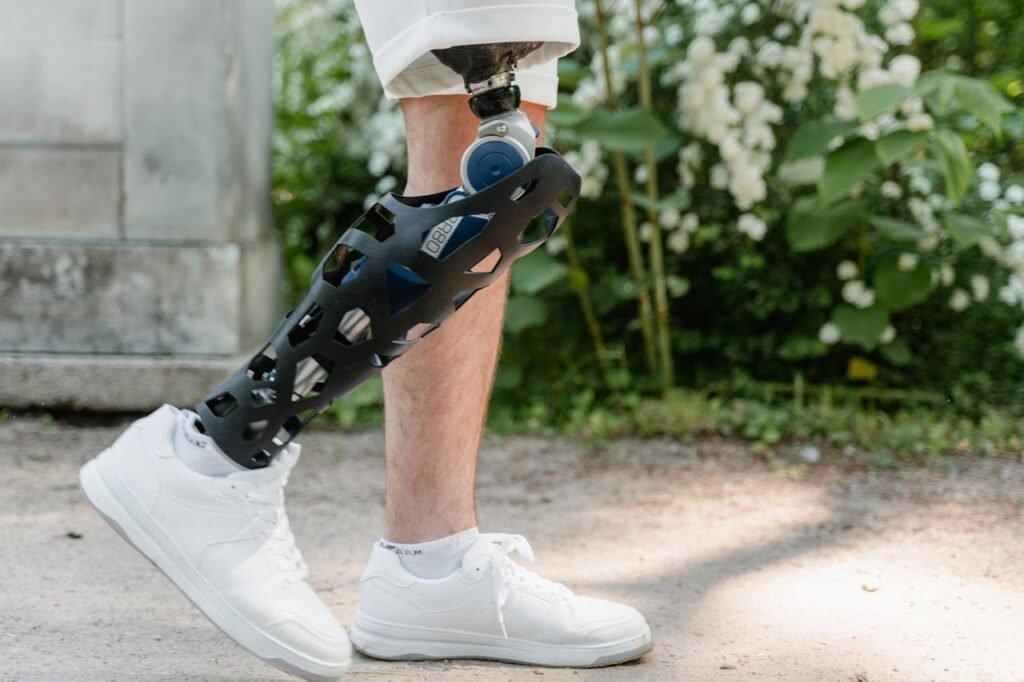
Factor 2: Choosing the Right Control System
The control system of a prosthetic arm determines how it operates and interacts with your body. Selecting the right system is crucial for achieving a seamless and intuitive experience.
Body-Powered Prosthetics
Body-powered prosthetics are controlled by harnessing the user’s physical movements, typically through a system of cables and straps. These devices are durable, lightweight, and cost-effective, making them a practical choice for users seeking basic functionality.
For example, a body-powered arm with a hook or split-hand terminal device allows users to perform tasks that require a firm grip, such as lifting or carrying objects. However, the mechanical nature of these prosthetics may limit their precision and versatility.
Myoelectric Prosthetics
Myoelectric prosthetics use electrical signals from the user’s muscles to control the device. Sensors placed on the residual limb detect muscle contractions, translating them into specific movements, such as opening and closing the hand or rotating the wrist.
This control system offers a more natural and intuitive experience, enabling users to perform tasks that require fine motor skills or multiple grip patterns. For example, a myoelectric hand prosthetic might allow users to hold a delicate object like a glass of water or manipulate tools with precision.
While myoelectric prosthetics are typically more expensive and require regular maintenance, their advanced functionality makes them a popular choice for individuals seeking greater independence and versatility.
Factor 3: Prioritizing Comfort and Fit
A prosthetic arm is only as effective as its ability to provide comfort and a secure fit. Ensuring that your prosthetic feels natural and integrates seamlessly with your body is crucial for long-term satisfaction and usability.
The Importance of a Custom Socket
The socket, which connects the prosthetic arm to your residual limb, plays a pivotal role in determining comfort. A poorly fitted socket can lead to discomfort, skin irritation, and even long-term issues such as pressure sores.
Conversely, a well-designed socket enhances stability, reduces fatigue, and ensures that the prosthetic feels like an extension of your body.
Custom sockets are tailored to the shape and size of your residual limb, taking into account factors like bone structure, muscle mass, and skin sensitivity. During the fitting process, a prosthetist will use advanced techniques such as 3D scanning or casting to create a precise mold of your limb.
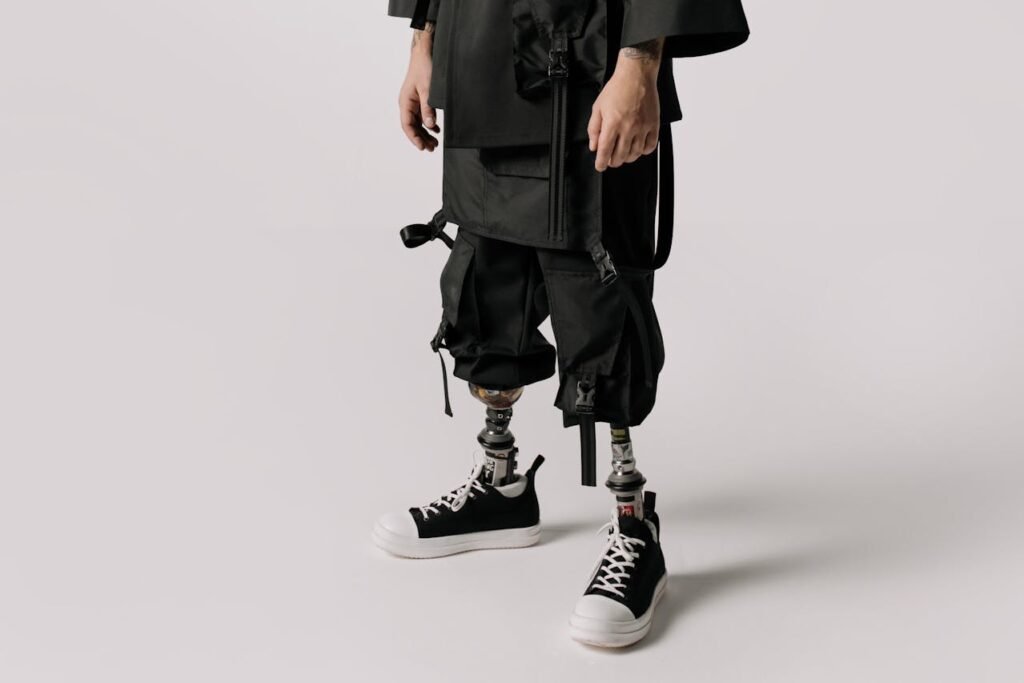
Regular adjustments may be necessary over time, as changes in your residual limb’s size or shape can affect the socket’s fit. Maintaining an open line of communication with your prosthetist ensures that your socket remains comfortable and functional.
Exploring Suspension Systems
The suspension system is another critical component that determines how securely the prosthetic arm attaches to your body. Various systems are available, each offering unique benefits depending on your needs and preferences.
For instance, suction suspension systems create a vacuum seal for a snug fit, while pin-lock systems use a locking mechanism to hold the prosthetic in place. Strap-based systems provide adjustable support, making them suitable for individuals with fluctuating limb sizes.
Working with a prosthetist to explore these options ensures that your suspension system complements your lifestyle and enhances overall comfort.
Factor 4: Evaluating Durability and Maintenance
A prosthetic arm is an investment, and its durability is a key factor in determining its long-term value. Choosing a device that can withstand the demands of your daily activities while requiring minimal maintenance ensures reliability and cost-effectiveness.
Material Selection
The materials used in a prosthetic arm significantly impact its strength, weight, and resistance to wear and tear. Lightweight materials such as carbon fiber and titanium are popular choices, offering a balance of durability and ease of use.
For individuals with physically demanding lifestyles, prosthetics made from reinforced materials provide additional resilience. For example, a carbon fiber forearm combined with a robust terminal device can handle tasks like lifting heavy objects or operating tools without compromising performance.
Maintenance Considerations
Regular maintenance is essential for keeping your prosthetic arm in optimal condition. This includes cleaning the device, inspecting moving parts for wear, and ensuring that electronic components, such as sensors or batteries, are functioning properly.
Many manufacturers offer maintenance packages or warranties that cover routine servicing and repairs. Opting for a prosthetic from a company with strong after-sales support ensures that you have access to professional assistance whenever needed.
Discussing maintenance requirements with your prosthetist before making a decision helps set realistic expectations and ensures that you’re prepared to care for your device.
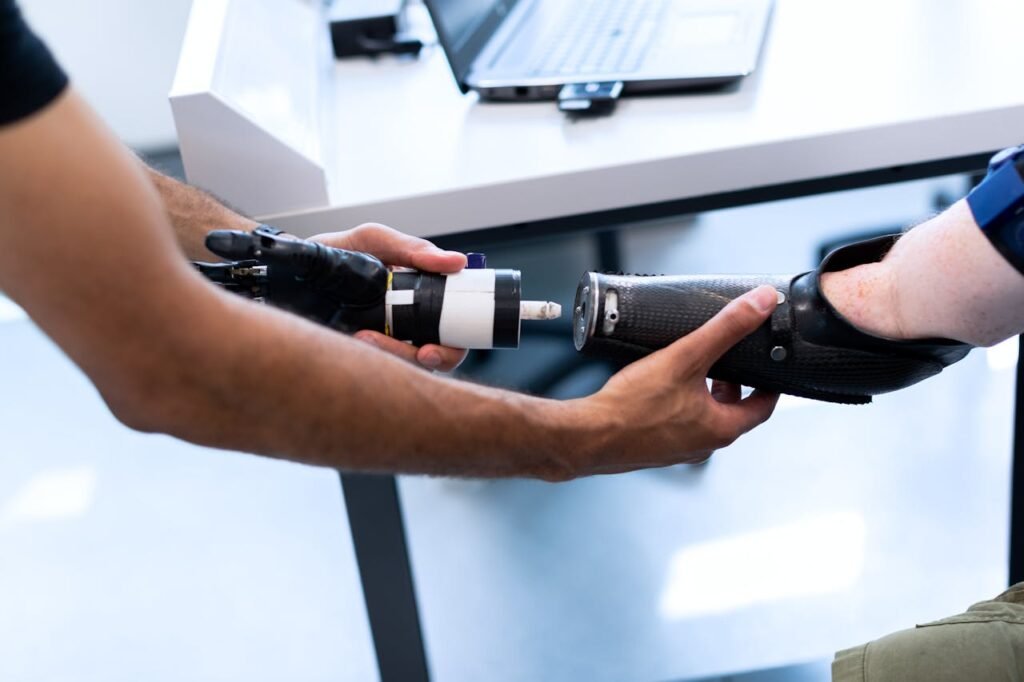
Factor 5: Aesthetic and Customization Options
While functionality and comfort are paramount, the appearance of a prosthetic arm can also play a significant role in how confident and connected you feel with your device. Customization options allow you to choose a prosthetic that reflects your personality and preferences, transforming it from a tool into a statement of individuality.
Aesthetic Covers and Finishes
Prosthetic arms are increasingly available with aesthetic covers that mimic the appearance of natural skin, complete with veins, freckles, and hair. These covers can be color-matched to your skin tone, creating a realistic look that blends seamlessly with your body.
Alternatively, some users prefer bold, artistic designs that turn their prosthetic into a conversation piece. Options like metallic finishes, vibrant colors, or patterns inspired by art or nature offer endless possibilities for personalization.
Functional Customization
Beyond aesthetics, functional customization ensures that your prosthetic aligns with your unique needs. For example, you might choose a terminal device optimized for a specific activity, such as a specialized tool for sports, music, or manual labor.
Some manufacturers also offer modular designs that allow you to swap components or upgrade features as your needs evolve. This flexibility ensures that your prosthetic adapts to your lifestyle, providing lasting value and satisfaction.
Making the Right Choice: Key Considerations and Expert Guidance
Selecting the perfect prosthetic arm is about finding a balance between functionality, comfort, durability, and aesthetics. It’s a decision that requires thoughtful consideration and collaboration with professionals who understand your unique needs.
By focusing on these aspects, you can ensure that the prosthetic you choose supports your lifestyle and empowers you to achieve your goals.
The Role of the Prosthetist
A prosthetist plays a central role in helping you navigate the selection process. They bring a wealth of knowledge and expertise, guiding you through every step, from initial consultations to final fittings.
Working closely with your prosthetist ensures that your prosthetic arm is tailored to your specific requirements, minimizing potential issues and maximizing your satisfaction.
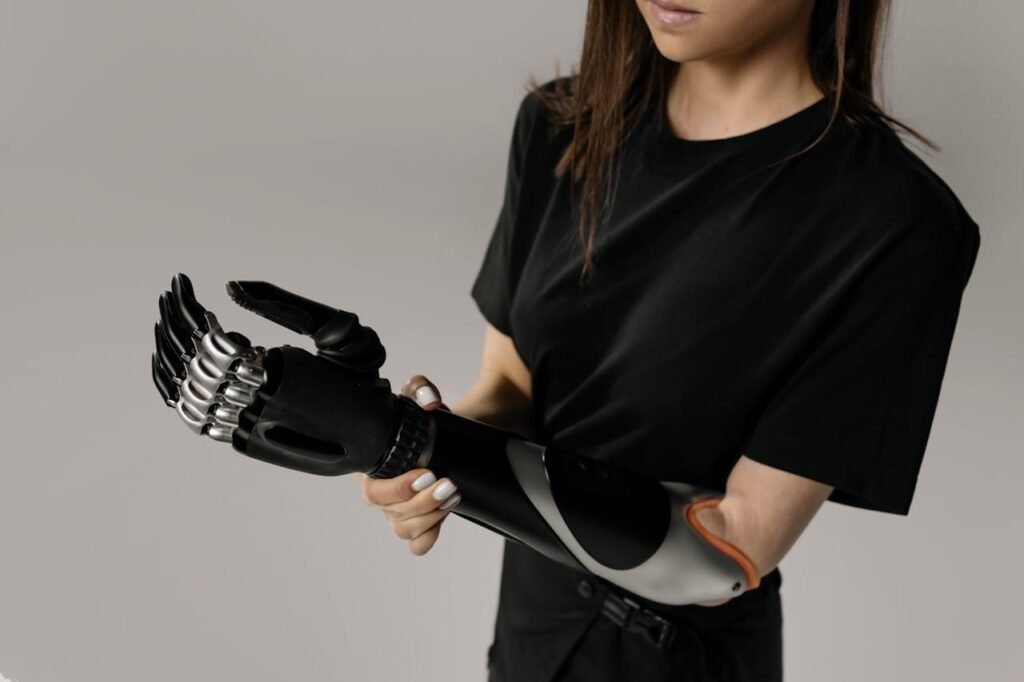
During your initial meetings, the prosthetist will assess factors such as your residual limb’s condition, your activity level, and your long-term goals. These insights inform their recommendations, ensuring that the prosthetic they suggest aligns with your lifestyle.
Regular follow-ups with your prosthetist also allow for adjustments as your needs change, ensuring a seamless experience over time.
Trial Periods for Informed Decisions
Many prosthetic providers offer trial periods, allowing users to test different devices in real-world settings. This hands-on experience is invaluable for understanding how a prosthetic performs in your daily life.
For example, you might test the grip strength of a myoelectric hand while cooking, or evaluate the comfort of a socket during extended wear. These trials provide an opportunity to identify strengths and areas for improvement, ensuring that your final choice meets your expectations.
Prosthetic providers and manufacturers that offer robust trial programs demonstrate a commitment to user satisfaction, reinforcing trust and confidence in their products.
Budgeting and Insurance Coverage
The cost of a prosthetic arm varies widely depending on its features, materials, and technology. Understanding the financial aspects of your decision is essential for managing expectations and planning effectively.
Many users rely on insurance coverage or government assistance to offset the cost of their prosthetic. Familiarizing yourself with your policy’s terms, including coverage limits and approved providers, helps streamline the process.
Additionally, discussing financing options with your prosthetic provider ensures that you can explore a range of devices without feeling constrained by budgetary concerns.
Businesses can support users by offering transparent pricing, financing plans, and assistance with insurance claims, making the selection process more accessible and stress-free.
Embracing the Journey of Adaptation
Choosing a prosthetic arm is not just about selecting a device—it’s about embarking on a journey of adaptation, growth, and empowerment. While the process may seem daunting at first, it’s also an opportunity to discover new strengths and possibilities.
Building Confidence Through Rehabilitation
Rehabilitation is a critical component of adapting to a prosthetic arm. Physical therapy helps users develop the strength, coordination, and confidence needed to operate their prosthetic effectively.
For example, exercises focused on fine motor skills can improve control over a myoelectric hand, while strength-building routines enhance the endurance required for heavy-duty tasks. Collaborating with therapists ensures that your rehabilitation plan is tailored to your abilities and goals, providing the foundation for long-term success.
Businesses that integrate rehabilitation support into their services—whether through partnerships with therapy centers or the development of online resources—create a more holistic experience for users, fostering trust and loyalty.
Emotional Resilience and Support
The journey to using a prosthetic arm effectively also involves emotional adaptation. It’s natural to experience a range of emotions, from frustration and self-doubt to optimism and pride. Recognizing and addressing these feelings is key to building resilience and embracing your new capabilities.
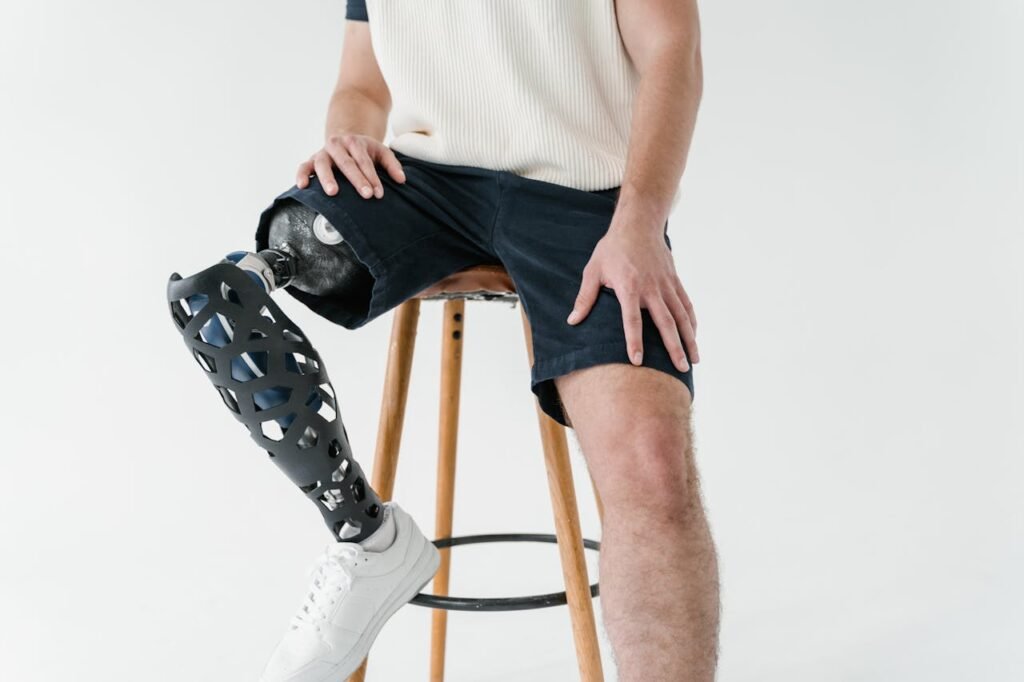
Peer support groups, counseling, and community events provide valuable opportunities to connect with others who share similar experiences. These connections offer encouragement, practical advice, and a sense of belonging, making the transition smoother and more rewarding.
For businesses, creating platforms for community engagement and sharing success stories helps users feel supported and inspired, reinforcing their commitment to the brand.
A Vision for the Future
Advancements in prosthetic technology continue to expand what’s possible, offering users new ways to enhance their independence and quality of life. From sensory feedback systems to AI-driven customization, the future of prosthetics is bright, and businesses have a vital role to play in shaping this progress.
The Evolution of Prosthetic Technology and Its Implications
The world of prosthetics has seen rapid advancements in recent years, offering users unprecedented options to regain functionality and independence. These innovations not only enhance the utility of prosthetic arms but also make the selection process more user-focused and accessible. For businesses, staying ahead of these trends is essential for meeting evolving user expectations and remaining competitive.
The Role of AI and Machine Learning
Artificial intelligence (AI) and machine learning are redefining the possibilities of prosthetic arms. These technologies enable prosthetics to learn and adapt to the user’s unique movements and preferences, creating a highly personalized experience.
For instance, an AI-driven prosthetic arm can analyze usage patterns to predict movements and provide smoother, more intuitive control.
A user who frequently performs repetitive tasks, such as typing or gripping tools, may benefit from a prosthetic that automatically adjusts its grip strength and speed based on the context.
Businesses that integrate AI into their prosthetics can set themselves apart by offering cutting-edge functionality that evolves with the user’s needs. This approach also fosters a sense of trust and satisfaction, as users feel their prosthetic truly understands and responds to their lifestyle.
Expanding Access Through Technological Collaboration
Collaboration between prosthetic manufacturers and tech companies is opening new doors for innovation. Partnerships with robotics firms, sensor developers, and software engineers are driving the creation of prosthetics that are smarter, lighter, and more versatile than ever before.
For example, integrating haptic feedback systems into prosthetic arms allows users to feel textures, pressure, and vibrations, bridging the gap between artificial and natural sensation.
Similarly, advancements in 3D printing technology enable the rapid production of highly customized prosthetics, reducing costs and wait times for users.
By forming strategic alliances, businesses can access the expertise and resources needed to push the boundaries of prosthetic design and functionality, positioning themselves as leaders in the industry.
The Importance of Inclusivity in Prosthetic Design
Inclusivity is becoming a cornerstone of modern prosthetic development. Businesses that prioritize inclusivity not only address the diverse needs of their users but also contribute to a more equitable and compassionate healthcare landscape.
Addressing Diverse Needs
Prosthetic users come from a wide range of backgrounds, each with unique goals, challenges, and preferences. A professional athlete may require a prosthetic arm designed for high performance and durability, while an artist might prioritize fine motor control and customization.
Inclusive design ensures that prosthetics are accessible to individuals with varying physical, cultural, and economic needs.
This approach might include offering a range of devices at different price points, developing multilingual resources for users in diverse regions, or creating prosthetics tailored to specific lifestyles and professions.
Encouraging User Empowerment
Inclusivity extends beyond the physical device to include the user’s sense of agency and self-expression. Businesses can empower users by involving them in the design and selection process, allowing them to make choices that reflect their identity and aspirations.
For example, offering customization options for color, material, and functionality enables users to create a prosthetic that feels uniquely theirs.
Highlighting user stories and celebrating their achievements also fosters a sense of pride and community, reinforcing the message that prosthetics are tools of empowerment, not limitation.
Looking Ahead: A Call to Action for Businesses
The journey to selecting the perfect prosthetic arm is one of collaboration, innovation, and resilience. For businesses, this journey represents an opportunity to redefine what prosthetics can achieve, not just in terms of functionality but also in the lives they transform.
Redefining User-Centered Innovation
To remain competitive and relevant, businesses must place the user at the heart of every decision, from design and development to distribution and support. This requires a deep understanding of the user experience, informed by regular engagement with prosthetic users, clinicians, and caregivers. Companies can establish advisory boards comprising diverse voices to ensure that their innovations are practical, inclusive, and aligned with real-world challenges.
For instance, involving users in the prototyping phase allows businesses to identify pain points and make improvements before the product reaches the market. Feedback loops, where users continuously provide insights into how their prosthetics perform in daily life, enable ongoing refinement and adaptation of product lines. Businesses that foster these collaborations signal their commitment to user satisfaction and build lasting loyalty.
Leveraging Data for Strategic Advancements
Data analytics offers unparalleled opportunities for businesses to enhance their offerings. By collecting and analyzing data on prosthetic usage patterns, wear and tear, and user feedback, companies can identify trends and predict future needs with precision.
For example, data on how users interact with adaptive grip systems might reveal areas where response times could be improved. These insights can guide the development of next-generation prosthetics with faster, more intuitive controls.
Similarly, data from sensors embedded in trial prosthetics can inform clinicians about alignment issues or inefficiencies, enabling more precise adjustments during the fitting process.
Businesses that invest in robust data infrastructure can stay ahead of the curve, aligning their innovations with user expectations and setting benchmarks for performance and quality.
Driving Access Through Strategic Partnerships
Accessibility remains a significant challenge in the prosthetics industry, particularly in underserved regions where cost and infrastructure barriers are prominent. Businesses have a unique role to play in overcoming these challenges by forging partnerships that expand reach and reduce costs.
Collaboration with non-profits and healthcare organizations can facilitate the distribution of affordable prosthetic arms to rural or low-income areas. By working with government bodies, companies can advocate for subsidies, tax incentives, or reimbursement programs that make prosthetics more accessible to those in need.
Businesses can also explore partnerships with local manufacturers and suppliers to reduce logistical expenses and improve supply chain efficiency. Such initiatives not only drive social impact but also position companies as leaders in fostering equity and inclusion.

Building a Culture of Lifelong Support
For many users, the journey with a prosthetic arm extends well beyond the initial purchase or fitting. Businesses that emphasize lifelong support build stronger relationships with their users while addressing critical challenges such as maintenance, upgrades, and evolving needs.
This culture of support can include offering subscription-based maintenance packages, on-demand access to technical assistance, or virtual consultations for troubleshooting and guidance.
Educational resources, such as tutorials and care guides, empower users to maintain their prosthetics independently, reducing downtime and enhancing user satisfaction.
Creating digital platforms or communities where users can share experiences, ask questions, and connect with others fosters a sense of belonging and reinforces the company’s role as a trusted partner in their journey.
Conclusion
Selecting the perfect prosthetic arm is about more than just finding a functional device—it’s about choosing a partner in your journey toward independence, confidence, and fulfillment. Every user’s needs are unique, and the right prosthetic should be a reflection of their goals, aspirations, and lifestyle.
For individuals, this process involves thoughtful consideration of functionality, comfort, durability, and aesthetics. Collaborating with a skilled prosthetist, taking advantage of trial periods, and exploring innovative options like AI integration and customization are key steps in finding the ideal fit.
The decision should prioritize not just physical requirements but also emotional well-being, empowering users to embrace their prosthetic as a source of strength and identity.
For businesses, the opportunity lies in guiding users through this journey with empathy, expertise, and a commitment to innovation.
By investing in user-centered design, providing comprehensive support, and fostering accessibility, companies can redefine the prosthetic experience and set new standards in the industry.
Inclusive practices and advanced technologies such as haptic feedback, adaptive controls, and modular designs ensure that prosthetics evolve alongside users, meeting their needs both today and in the future.



